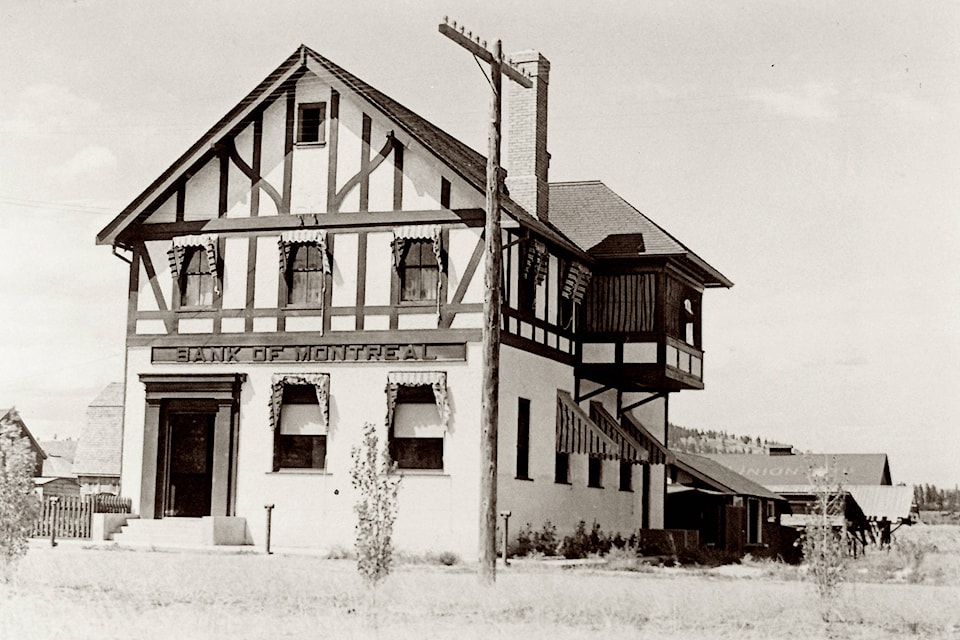The Bank of Montreal has been part of Summerland’s history from the beginning.
When Canadian Pacific Railway President Sir Thomas Shaughnessy decided to purchase the Barclay cattle ranch in 1902 to start Summerland, he mentioned that he would get five or six of his friends to invest in the project.
Two of those friends were R.B. Angus, national president of the Bank of Montreal and Sir Edward Clouston, national general manager of the Bank of Montreal.
Not only were they some of the first people to purchase land from Shaughnessy’s Summerland Development Company but they also joined Shaughnessy in his famous annual inspection tours from 1903 to 1910.
These tours monitored the progress of Summerland’s development.
By 1909, Summerland was the most prosperous Okanagan community.
Incidentally, both the Clouston and Angus orchard homes are in excellent shape and listed on Summerland’s heritage inventory.
Summerland’s link to the Bank of Montreal goes back to the origins of the community.
In the 1890s, the Okanagan Valley’s only bank was the Bank of Montreal in Vernon. Its president was George Arthur Henderson (1857-1937.)
Henderson and J.M. Robinson were riding their horses at the western edge of Prairie Valley when they spotted a wild peach tree. They both realized that the land could support fruit growing and the idea of starting an agricultural community began. Later G.A. Henderson became a director of Shaughnessy’s Development Company.
The Bank of Montreal was Summerland’s first bank. In 1907 there was a “Teller’s Box” office beside the Summerland Review office in our Lowertown.
An employee from the Vernon Bank would travel by boat to Summerland and provide banking services.
The first bank teller was H.J. Collas and the manger was Edward B. May (1867-1954.)
In 1908 it became a branch of the Vernon bank. By 1911, the Bank expanded into West Summerland and was located in the Gowan store.
By 1917, G.A. Henderson decided to build a new bank in Summerland on the corner of Granville Avenue (Main Street) and Kelley Avenue.
The project went out for bids and Bert Harvey’s bid of $9,000 was accepted by the bank.
An architect from Montreal, Frank Peden (1877-1969) associated with at least 19 other Bank of Montreal buildings across Canada was chosen.
Peden was also the architect for the Vernon, Kelowna and Penticton banks.
Early text of British Columbia architect Samuel Maclure, claimed that Maclure had designed the Summerland building, but recent evidence has established Peden as the architect.
The final architectural design of the building had some input from May.
The building was 28 feet, three inches wide and 52 feet, three inches deep. At the time of construction there were only two other buildings on Summerland’s Main Street: the Summerland Supply Store which still stands at the corner of Main Street and Victoria Road and James Ritchie’s Post Office/ Repair store.
When Summerland developed its first Heritage Inventory list in 1986, the Bank of Montreal was an early selection.
The heritage inventory only recognizes the historical/architectural importance of the building to our community. The inventory does not provide additional protection to the building.
When a heritage building is threatened with alteration or demolition, the building is “red flagged” and municipal staff inform the Heritage Advisory Commission.
The commission can then make recommendations to municipal council.
Currently there is only one heritage building with greater heritage protection: the Service Station, or the the former Lakeside Church.
David Gregory is a Summerland historian.
